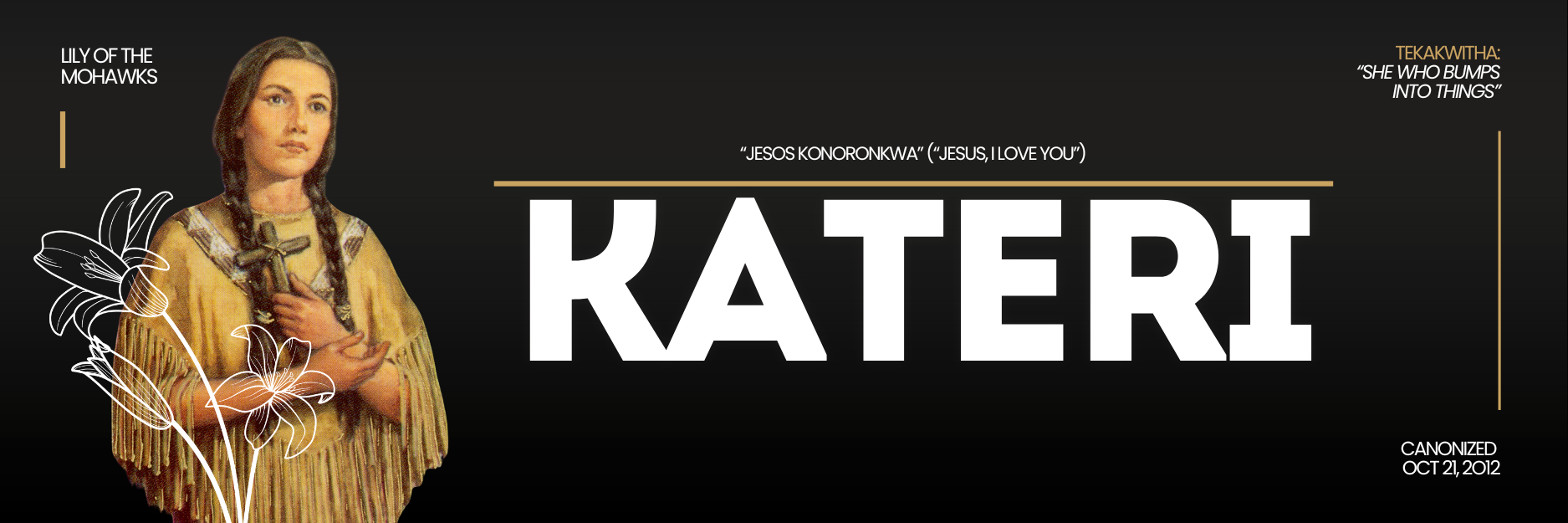
Written by Dr. Rose-Alma Mcdonald
In the rolling forests of 17th-century North America, a young Mohawk girl named Kateri Tekakwitha faced adversity with unwavering faith. Orphaned and left with lifelong scars from smallpox, Kateri’s devotion to Christianity became her guiding light, setting her apart in a world where indigenous traditions and new faiths often collided. Despite the challenges she endured, Kateri’s compassion and resilience inspired those around her, weaving a legacy that would carry her name across centuries.
Kateri’s importance lies not only in her personal story of overcoming suffering, but also in her role as a bridge between cultures. She showed that faith could flourish in unexpected places, and her kindness earned her the title “Lily of the Mohawks.” Generations later, her canonization resonated deeply among indigenous and Catholic communities alike. It became a symbol of hope, recognition, and healing, affirming that holiness transcends boundaries of race and tradition.
The canonization of St. Kateri Tekakwitha sparked a wave of inspiration, leading to the naming of countless churches, schools, and institutions in her honor across Canada and the United States. Her story brought together people in Kateri Circles and annual conferences, nurturing a sense of community and shared purpose. St. Kateri’s enduring legacy continues to guide the faithful, reminding all that courage, love, and dedication can transform hearts and history.
St. Kateri Tekakwitha was canonized as a saint by Pope Benedict XVI on October 21, 2012, in a ceremony held at St. Peter’s Basilica in Vatican City. The event was attended by pilgrims from around the world, including many representatives of Native American and First Nations communities, who celebrated her as the first Native American saint. Her canonization was a moment of profound significance, recognizing her faith, resilience, and the lasting impact she has had on both the Catholic Church and indigenous peoples.
The Vatican’s official portrait of St. Kateri Tekakwitha was created by Mohawk artist Jordan Thompson in 2012, following her canonization. The pen-and-ink portrait depicts her with symbols relevant to her life, such as the white pine branch for peace, three strands of wampum for the Trinity, and a blue blanket to shield her from the sun due to her smallpox-related blindness.
- Artist: Mohawk artist Jordan Thompson created the portrait.
- Presentation: He presented the portrait to the Vatican, and it was blessed by the Pope.
- Symbolism:
- White pine branch: Represents peace through the Iroquois tradition.
- Three strands of wampum: Represent the Holy Trinity.
- Blue blanket: Shields her eyes from the sun, as she was nearly blinded by smallpox.
- Iroquois Sky Dome motif: Used in the halo around her head to represent the celestial and earthly worlds.
- Setting: The portrait shows her outdoors, buffeted by wind, symbolizing her faith in the face of life’s trials and her connection to nature.
- Lilies: The lilies surrounding her allude to her nickname, the “Lily of the Mohawks”.
To learn more about the piece and its artist, click here.
